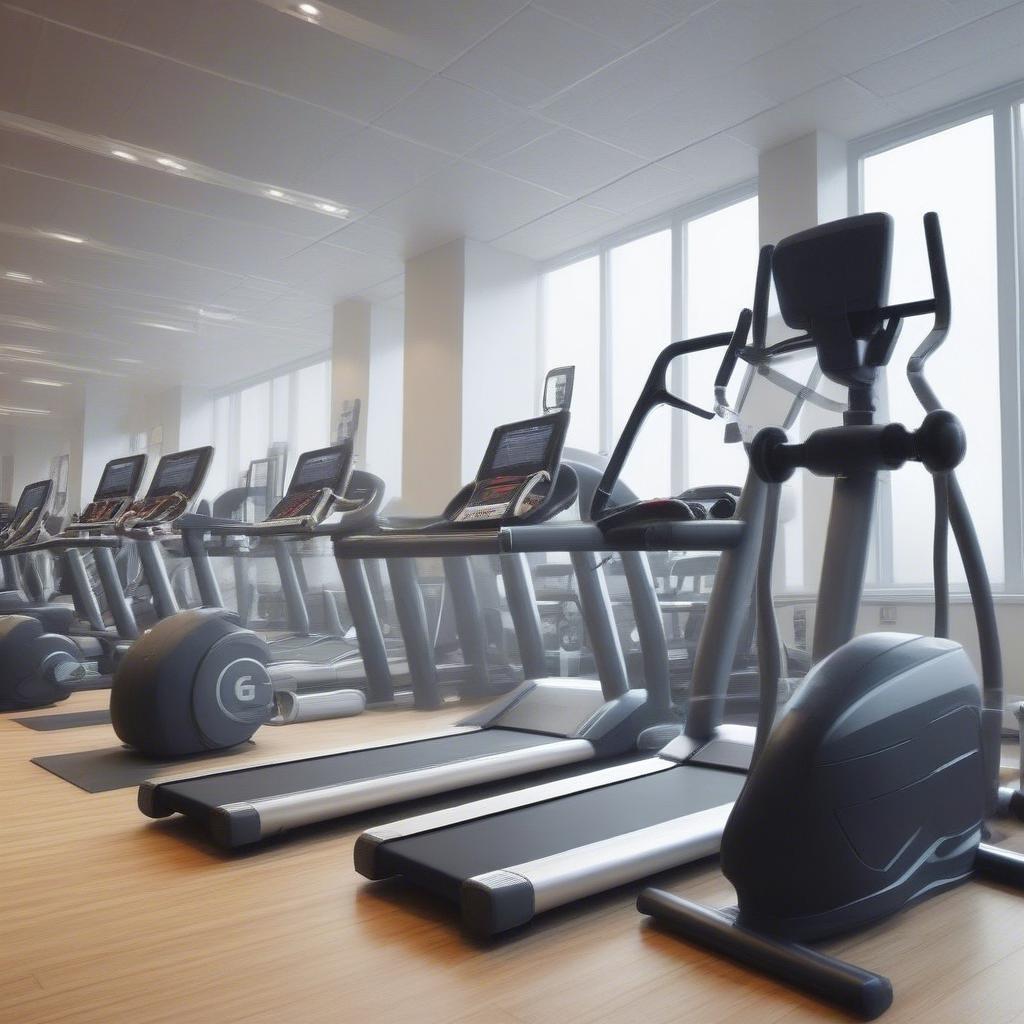
Opening a gym is more than just setting up equipment; it’s about creating a community, a space where people transform. And the cornerstone of a thriving fitness center lies in its gym location. Choosing the right fitness center site isn’t just about convenience; it’s about attracting the right clientele, ensuring accessibility, and setting the stage for long-term success. This guide delves into the critical factors, providing you with a roadmap to find the best place for gym that resonates with your vision.
Why Location is Paramount for Gym Success
Your gym location is not just an address; it’s the first impression you make, the accessibility you offer, and the potential for growth you harness. Here’s why getting it right is absolutely crucial:
1. Attracting Your Target Audience
- Demographics Matter: Are you targeting busy professionals, college students, families, or seniors? Your chosen fitness center site should align with the demographics you aim to serve. A gym near a college campus will likely have a different vibe and program offering than one in a family-oriented suburb.
- Accessibility and Visibility: A hard-to-find location or one that’s not easily accessible is going to repel potential members, no matter how excellent your equipment and programs are. High visibility is key to attracting walk-ins and those driving by.
- Psychological Impact: The aesthetics and atmosphere of the surrounding area impact people’s perception of your gym. A run-down location might deter potential customers, even if your facility is top-notch.
2. Operational Efficiency and Cost-Effectiveness
- Rent and Lease Terms: Commercial real estate rates vary greatly depending on location. Your gym location‘s rent will heavily impact your overhead expenses. Finding a balance between cost and high potential traffic is key.
- Parking and Public Transportation: Easy access for members is non-negotiable. Sufficient parking and proximity to public transport are vital for member convenience and retention.
- Utilities and Maintenance: Older buildings may come with increased utility costs or maintenance issues that can impact your operational budget, further adding to the importance of selecting the best place for a gym.
- Zoning Laws: Before signing a lease, thoroughly investigate zoning laws. Ensure your desired location allows for a fitness business without restrictions.
3. Competitive Edge and Market Positioning
- Understanding the Competition: Look at where competing gyms are located and consider the demographics they are serving. Are they missing a niche that your gym location can exploit?
- Unique Selling Proposition: Your gym location can reinforce your gym’s unique selling proposition. For example, a high-end facility with top-of-the-line equipment will do better in an affluent area, while a budget gym would thrive near large communities.
- Branding and Image: Your location should reflect your brand’s personality. A trendy, high-tech gym would benefit from a location in a modern, urban setting.
4. Long-Term Growth and Sustainability
- Future Expansion: Consider if your gym location provides potential for future expansion if your business grows. Is there an adjacent space or parking available?
- Community Development: A thriving area indicates a growing community base that can translate to an increasing member base in the future.
- Investment Potential: A strategic fitness center site can appreciate in value, making it a smart long-term business investment.
Essential Factors to Consider When Choosing a Gym Location
Choosing the best place for a gym involves a careful evaluation of numerous factors. Here is a breakdown of the crucial elements:
1. Demographics and Market Analysis
- Target Customer Profile: Define your ideal member. Understand their age, income, lifestyle, and fitness needs. Utilize surveys and market research to collect data.
- Example: If you’re targeting young professionals, a location near business districts or popular residential complexes would be ideal.
- Population Density and Growth: A densely populated area ensures a larger pool of potential customers. Consider the area’s projected growth for future sustainability.
- Income Levels and Affordability: Your pricing structure should align with the average income levels of the target area. Is the community comfortable spending on a gym membership?
2. Accessibility and Visibility
- Street Accessibility: Is your gym location easy to reach from major roads? How long does it take to reach from various points?
- Parking Availability: Adequate parking is essential, particularly for gyms operating outside of major city centers. How many spaces do you need? Are there opportunities for shared parking?
- Public Transportation: Are there bus stops, train stations, or subway lines nearby? Proximity to these points improves access for members without cars.
- Visibility from Street: A visible location with ample signage can greatly improve your chance of being noticed by potential customers driving or walking by. A gym location that’s not easily seen often gets overlooked.
- Pedestrian Traffic: Consider the volume of foot traffic in the area. Locations with high pedestrian traffic can significantly increase walk-in interest.
3. Building and Space Considerations
- Size and Layout: Determine the required square footage for your equipment, classes, and locker rooms, plus space for amenities like a reception area and perhaps a smoothie bar.
- Ceiling Heights: High ceilings are essential for accommodating tall equipment, mirrors, and providing an open, inviting feel.
- Floor Type and Condition: Choose a building with a floor that can withstand heavy equipment and high-traffic areas. It should also be easy to clean and maintain.
- Loading Dock and Storage: You will need a good loading dock and storage area to accommodate equipment delivery and storage needs, especially if your gym location also has retail merchandise.
- ADA Compliance: Ensure the building complies with ADA regulations for accessibility.
- Plumbing and Electrical Systems: Your gym location must have adequate plumbing and electrical systems to handle the showers, toilets, and machinery. You will need sufficient power to run all the treadmills, ellipticals, and other equipment.
4. Competitive Landscape
- Number of Competing Gyms: Identify all the gyms within a 5-mile radius. Assess their strengths, weaknesses, pricing, and membership base.
- Niche Opportunities: Can your gym location capitalize on gaps in the market? For example, if all gyms in the area are generic, can you create a niche for crossfit or yoga?
- Competitive Pricing Strategy: Research the pricing structure of competitors and develop a competitive pricing strategy to attract members.
5. Zoning Regulations and Legal Considerations
- Commercial Zoning: Confirm that the chosen location is zoned for a fitness center. Different municipalities have different zoning laws, so check beforehand.
- Permits and Licenses: Secure all necessary permits and licenses required for operating a gym.
- Lease Agreement: Review the lease agreement thoroughly, paying close attention to clauses regarding rent, lease duration, and tenant responsibilities.
6. Budget and Financial Viability
- Rent and Operating Costs: Project your rental expenses along with estimated utilities, insurance, equipment maintenance, and marketing costs. Can you cover your expenses during the initial slow periods?
- Financial Projections: Create detailed financial projections to assess the profitability of the gym location. Be realistic and plan for unexpected expenses.
- Funding and Investment: Consider funding options if you need additional capital to secure a prime location.
- Breakeven Analysis: Conduct a breakeven analysis to estimate how many members you need to generate revenue.
7. Future Growth and Potential
- Expansion Opportunities: Evaluate whether the location offers expansion potential. Can you expand to an adjacent space or add new equipment?
- Long-Term Leases: Consider securing a long-term lease with options to renew, ensuring business continuity and predictability.
- Community Growth: Research planned community development projects that might affect the long-term value of your fitness center site.
Step-by-Step Guide to Finding the Best Place for a Gym
Navigating the complexities of site selection doesn’t have to feel overwhelming. Here’s a practical step-by-step guide:
Step 1: Define Your Target Audience and Business Concept
- Create a Detailed Profile: Understand your ideal member’s demographics, psychographics, and fitness goals. The more clearly you define your target, the easier you’ll find the right location.
- Define Your Unique Selling Proposition (USP): What makes your gym different? Do you focus on a specific niche or offer exclusive amenities? This should help guide your gym location selection.
Step 2: Conduct Thorough Market Research
- Local Area Analysis: Explore different neighborhoods, towns, and business districts. Collect demographic data and information about local competition. Use tools like Google Maps, city databases, and demographic reports.
- Competitive Analysis: Identify existing gyms and their strengths and weaknesses. Find a market niche you can exploit. Are the local gyms overcrowded or outdated?
- Surveys and Interviews: Get feedback directly from your target audience through online surveys, questionnaires, or focus group interviews. Find out what their preferences and needs are.
Step 3: Develop Location Criteria
- Prioritize Your Needs: Compile a list of must-have features for your location. This might include high visibility, adequate parking, and proximity to specific amenities.
- Score Your Locations: Develop a scoring system for comparing different locations. Assign weights to different criteria based on their importance to your business.
- Create a Location Checklist: Make a checklist with elements like size, condition, accessibility, zoning, and costs. This will ensure you don’t miss any key elements.
Step 4: Scout Potential Locations
- Use Commercial Real Estate Websites: Platforms like LoopNet, CityFeet, and CommercialCafe offer listings of available properties for lease.
- Engage a Commercial Real Estate Agent: Agents can provide valuable insights into the local market and assist with negotiation. They may also be aware of properties not yet advertised.
- Visit Locations in Person: Pictures aren’t always indicative of the real thing. Do a site visit to evaluate the area and potential for your business.
- Take Notes and Pictures: Keep a record of all the locations you visit along with their strengths, weaknesses, and the neighborhood demographics.
Step 5: Analyze and Compare
- Use a Spreadsheet: Compile your findings and analyze all the collected data. This will enable a structured and well-organized comparison.
- Compare Your Locations: Compare the pros and cons of each location based on your criteria. Refer back to your location checklist and scoring system.
- Consult with Professionals: Seek advice from legal and financial professionals to evaluate zoning and budgetary concerns.
Step 6: Negotiate Lease Terms
- Negotiate Rent and Lease Duration: Use your research to get the best possible lease terms. Be prepared to walk away if the terms are not acceptable.
- Review the Lease Agreement: Have a legal professional review all aspects of the lease agreement before signing.
- Secure Necessary Permits and Licenses: Obtain all permits and licenses required for your gym business at your selected location.
Step 7: Build and Launch
- Design Your Space: Create a functional and attractive layout for your gym.
- Install Equipment and Signage: Install all of your equipment and outdoor signage.
- Launch Your Gym: Kick off your marketing efforts to drive membership.
Strategies to Enhance Your Gym Location’s Attractiveness
Once you’ve found a great gym location, it’s time to enhance its appeal. Here are some strategies:
1. Optimize Signage and Branding
- Eye-Catching Signage: Ensure your signage is visible, clear, and aligned with your brand identity. Consider illuminated signs for nighttime visibility.
- Consistent Branding: Use consistent brand messaging and visuals on the building, promotional materials, and digital platforms.
- Engaging Window Displays: Create appealing window displays that showcase your equipment, classes, and the positive atmosphere of your gym.
2. Leverage Community Engagement
- Local Partnerships: Collaborate with local businesses, schools, and community organizations to create brand awareness.
- Host Community Events: Organize fitness challenges, open house events, and health workshops to engage the local community.
- Local Networking: Participate in local networking events to connect with potential clients and build relationships.
3. Digital Marketing and Local SEO
- Google My Business: Optimize your Google My Business profile to appear in local search results. Make sure your address, operating hours, and business category are correct.
- Local SEO Keywords: Use local SEO keywords in your website content and blog posts. For example, “gym in [city name]” or “fitness center near me.”
- Social Media Promotion: Utilize social media to promote your gym within the local community. Post location-specific content and engage with local residents.
4. Create an Inviting and Functional Space
- Clean and Well-Maintained Facility: Keep the gym clean, well-maintained, and comfortable for all members.
- Effective Layout and Flow: Arrange your equipment and class spaces to ensure efficient movement and maximum utility.
- Comfortable Amenities: Provide well-stocked locker rooms, showers, and comfortable resting areas.
- Positive Atmosphere: Create a welcoming and motivating environment that encourages people to achieve their fitness goals.
Learn Business: Supporting Your Gym Success
Choosing the perfect gym location is only one piece of the puzzle. Learn Business understands the challenges of operating a successful fitness center and is committed to supporting businesses like yours with expert guidance and resources.
How Learn Business Supports Your Gym
- Business Plan Templates: Our customizable business plan templates are tailored for the fitness industry. These templates will help you define your mission, conduct market analysis, and build a financial model.
- Marketing Strategy Guides: Learn how to attract and retain customers with our marketing guides. We will teach you how to build a local and online presence, utilize social media, and create effective marketing campaigns.
- Financial Forecasting Tools: Gain access to forecasting tools to manage your budget, project revenue, and plan for future growth.
- Location Analysis Checklists: Use our location analysis checklists to guide your decision-making process.
- Expert Advice: Get personalized consultation and expert advice tailored to your gym’s specific needs.
- Networking Opportunities: Connect with other business owners in the fitness industry through our learning platform.
- Ongoing Support: Our commitment extends beyond templates. We provide continuous support to ensure you navigate the ever-changing world of business successfully.
Learn Business offers everything you need to transform your dream gym into a thriving business. The best place for gym paired with a well-planned business strategy is the key to creating a successful, resilient, and community-focused gym. Your gym location is just the start – let Learn Business help you build a successful future.
In conclusion, choosing the right gym location is a crucial decision with long-lasting impacts on your gym’s success. By carefully considering demographics, accessibility, cost, competition, and future growth, you’ll lay the foundation for a thriving fitness community. This detailed guide provides the steps to help you find that perfect location so you are ready to provide the very best service to all your clients. Coupled with the resources and support provided by Learn Business, you’ll be well-equipped to create not just a gym, but a center of wellness, growth, and community transformation.



Leave a Reply